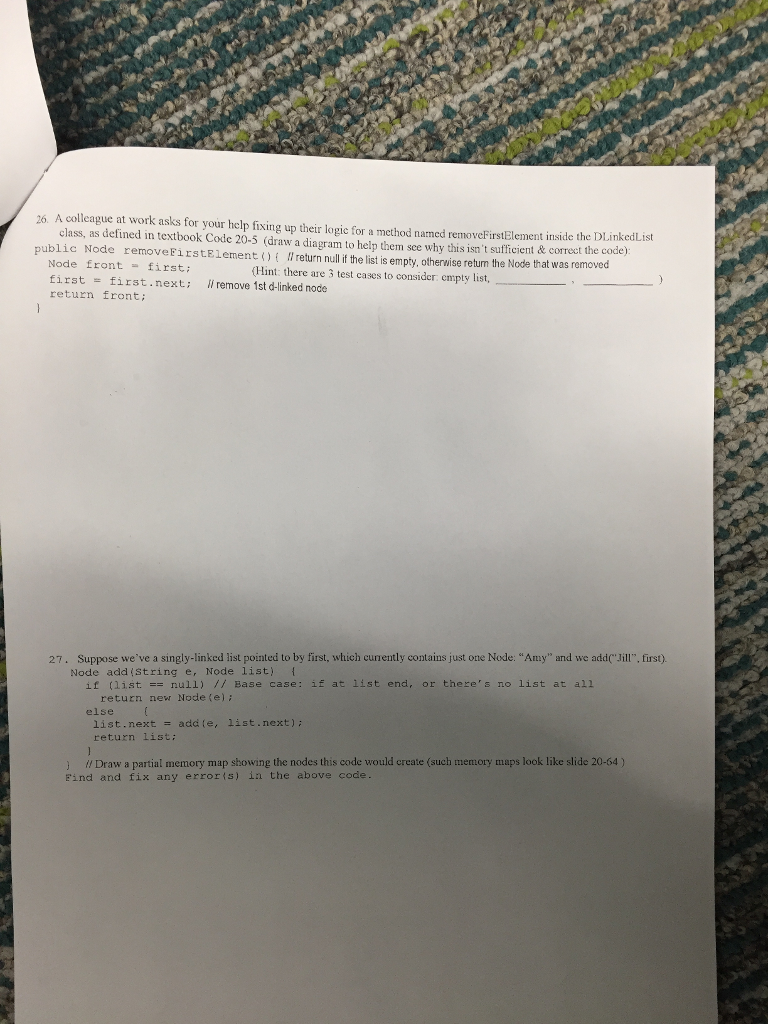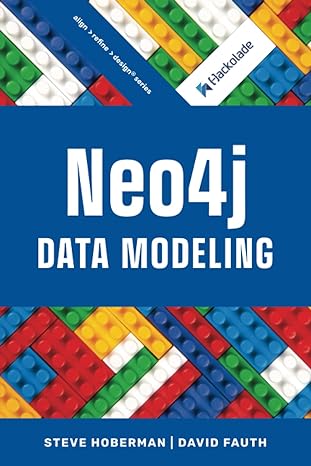Question
/** The DLinkedList class implements a doubly Linked list. */ class DLinkedList { /** The Node class stores a list element and a reference to

/**
The DLinkedList class implements a doubly
Linked list.
*/
class DLinkedList
{
/**
The Node class stores a list element
and a reference to the next node.
*/
private class Node
{
String value; // Value of a list element
Node next; // Next node in the list
Node prev; // Previous element in the list
/**
Constructor.
@param val The element to be stored in the node.
@param n The reference to the successor node.
@param p The reference to the predecessor node.
*/
Node(String val, Node n, Node p)
{
value = val;
next = n;
prev = p;
}
/**
Constructor.
@param val The element to be stored in the node.
*/
Node(String val)
{
// Just call the other (sister) constructor
this(val, null, null);
}
}
private Node first; // Head of the list
private Node last; // Last element on the list
/**
Constructor.
*/
public DLinkedList()
{
first = null;
last = null;
}
/**
The isEmpty method checks to see if the list
is empty.
@return true if list is empty, false otherwise.
*/
public boolean isEmpty()
{
return first == null;
}
/**
The size method returns the length of the list.
@return The number of elements in the list.
*/
public int size()
{
int count = 0;
Node p = first;
while (p != null)
{
// There is an element at p
count ++;
p = p.next;
}
return count;
}
/**
The add method adds to the end of the list.
@param e The value to add.
*/
public void add(String e)
{
if (isEmpty())
{
last = new Node(e);
first = last;
}
else
{
// Add to end of existing list
last.next = new Node(e, null, last);
last = last.next;
}
}
/**
This add method adds an element at an index.
@param e The element to add to the list.
@param index The index at which to add.
@exception IndexOutOfBoundsException
When the index is out of bounds.
*/
public void add(int index, String e)
{
if (index size())
{
String message = String.valueOf(index);
throw new IndexOutOfBoundsException(message);
}
// Index is at least 0
if (index == 0)
{
// New element goes at beginning
Node p = first; // Old first
first = new Node(e, p, null);
if (p != null)
p.prev = first;
if (last == null)
last = first;
return;
}
// pred will point to the predecessor
// of the new node.
Node pred = first;
for (int k = 1; k
{
pred = pred.next;
}
// Splice in a node with the new element
// We want to go from pred-- succ to
// pred--middle--succ
Node succ = pred.next;
Node middle = new Node(e, succ, pred);
pred.next = middle;
if (succ == null)
last = middle;
else
succ.prev = middle;
}
/**
The toString method computes the string
representation of the list.
@return The string representation of the
linked list.
*/
public String toString()
{
StringBuilder strBuilder = new StringBuilder();
// Use p to walk down the linked list
Node p = first;
while (p != null)
{
strBuilder.append(p.value + " ");
p = p.next;
}
return strBuilder.toString();
}
/**
The remove method removes the element
at a given position.
@param index The position of the element
to remove.
@return The element removed.
@exception IndexOutOfBoundsException When
index is out of bounds.
*/
public String remove(int index)
{
if (index = size())
{
String message = String.valueOf(index);
throw new IndexOutOfBoundsException(message);
}
// Locate the node targeted for removal
Node target = first;
for (int k = 1; k
target = target.next;
String element = target.value; // Element to return
Node pred = target.prev; // Node before the target
Node succ = target.next; // Node after the target
// Route forward and back pointers around
// the node to be removed
if (pred == null)
first = succ;
else
pred.next = succ;
if (succ == null)
last = pred;
else
succ.prev = pred;
return element;
}
/**
The remove method removes an element from the list.
@param element The element to remove.
@return true if the element was removed, false otherwise.
*/
public boolean remove(String element)
{
if (isEmpty())
return false;
// Locate the node targeted for removal
Node target = first;
while (target != null
&& !element.equals(target.value))
target = target.next;
if (target == null)
return false;
Node pred = target.prev; // Node before the target
Node succ = target.next; // Node after the target
// Route forward and back pointers around
// the node to be removed
if (pred == null)
first = succ;
else
pred.next = succ;
if (succ == null)
last = pred;
else
succ.prev = pred;
return true;
}
public static void main(String [] args)
{
DLinkedList ll = new DLinkedList();
ll.add("Amy");
ll.add("Bob");
ll.add(0, "Al");
ll.add(2, "Beth");
ll.add(4, "Carol");
System.out.println("The elements of the list are:");
System.out.println(ll);
}
}
26. A colleague at work asks for your help fixing up their logic for a method named removeFirstElement inside the DLinkedList class, as defined in textbook Code 20-5 (draw a diagram to help them see why this isn't sufficient& correct the code) public Node removeFirstElement() Node front first first first.next: i remove 1st d-linked node return front return null if the list is empty, otherwise retun the Node that was removed Hint there are 3 test cases to consider empty list, 27. Suppose we've a singly-linked list pointed to by first, which currently contains just one Node: "Amy" and we addc Jill", first) Node addistring e, Node list) t if ?list == null) // Base case: if at list end, or there's no list at all return new Node (e) list.next- add (e, list.next) return list: f Draw a partial memory map showing the nodes this code would create (such memory maps look like slide 20-64) ind and fix any erroris) in the above codeStep by Step Solution
There are 3 Steps involved in it
Step: 1

Get Instant Access to Expert-Tailored Solutions
See step-by-step solutions with expert insights and AI powered tools for academic success
Step: 2

Step: 3

Ace Your Homework with AI
Get the answers you need in no time with our AI-driven, step-by-step assistance
Get Started


